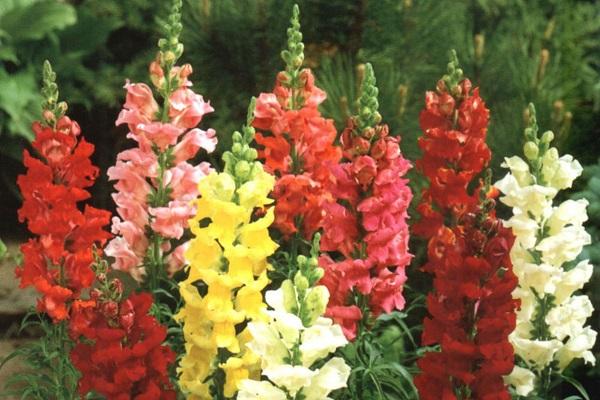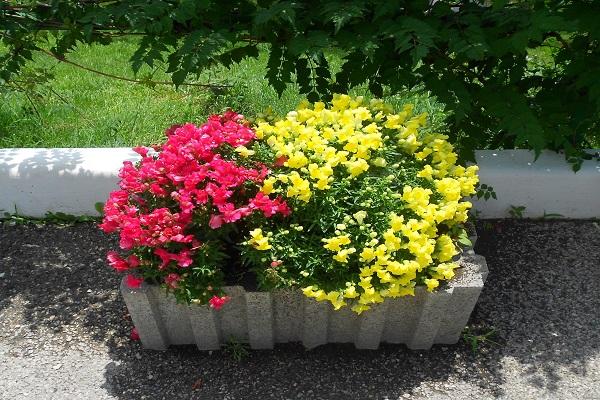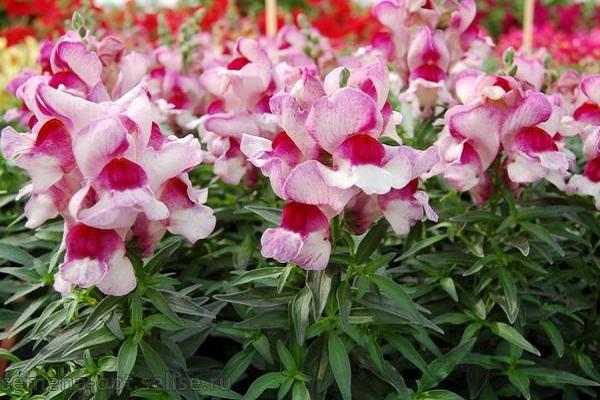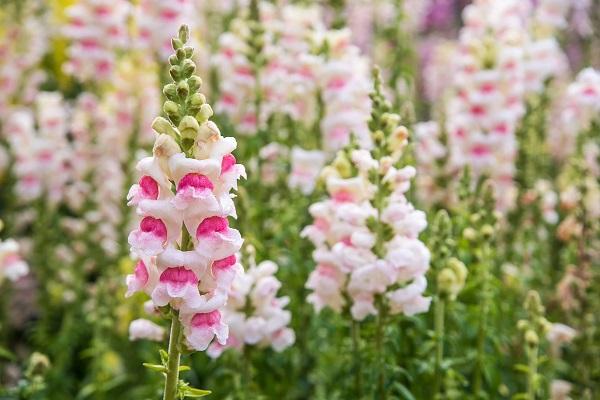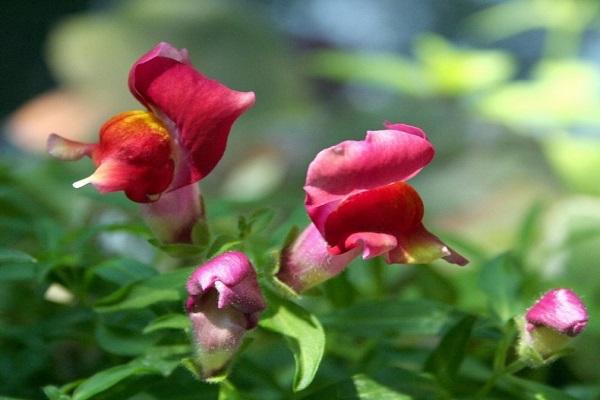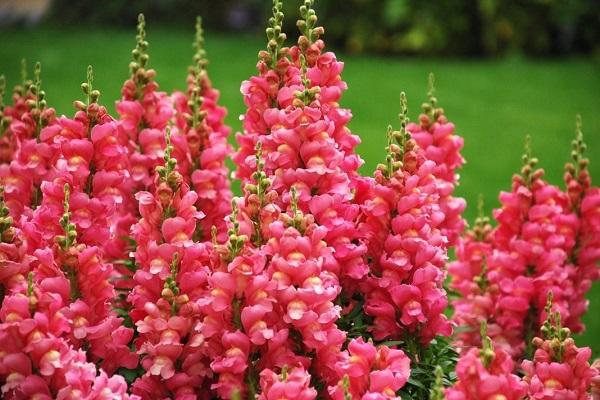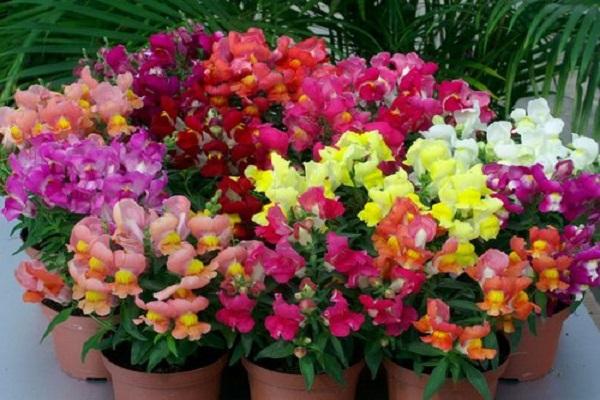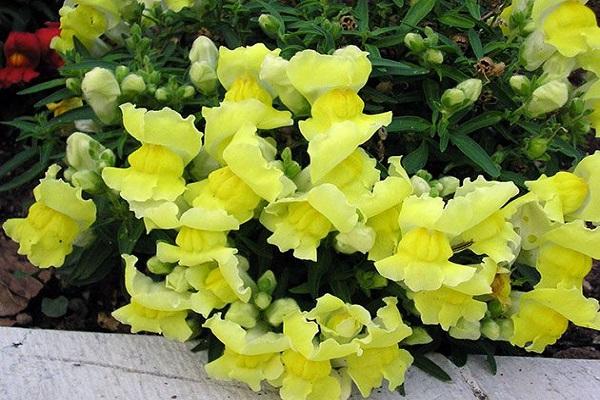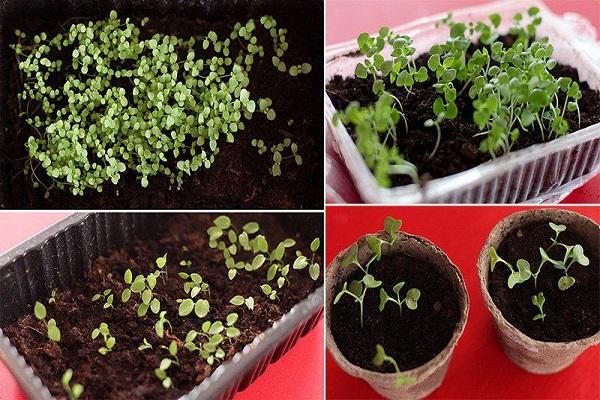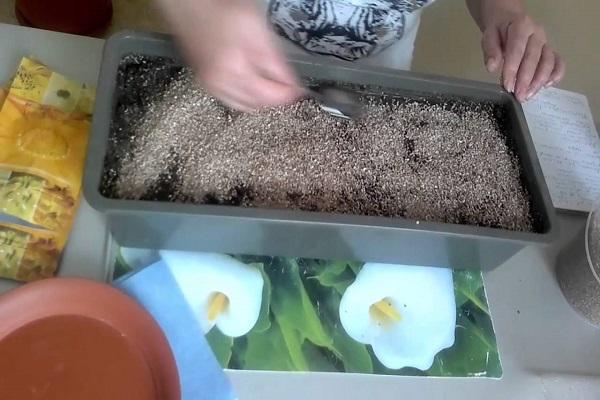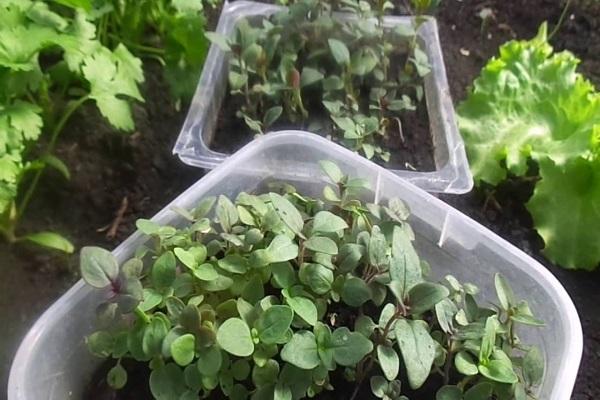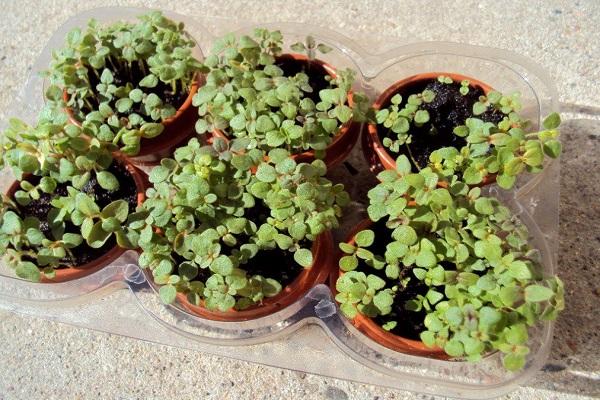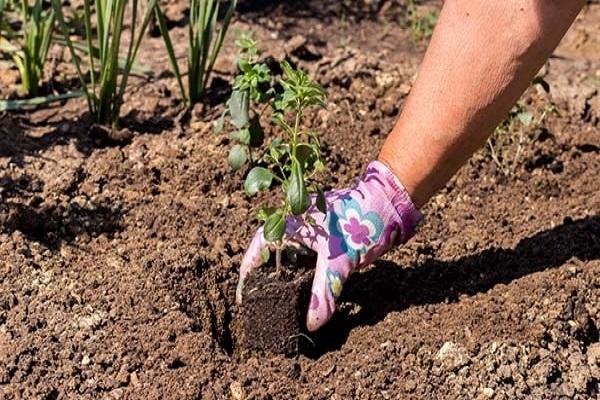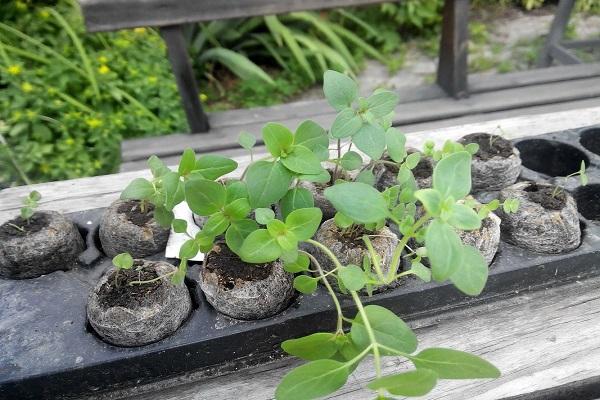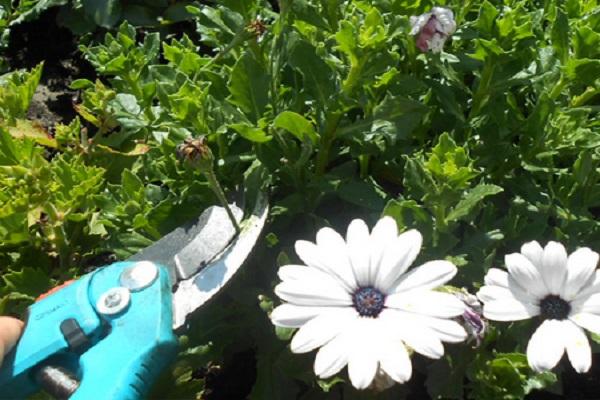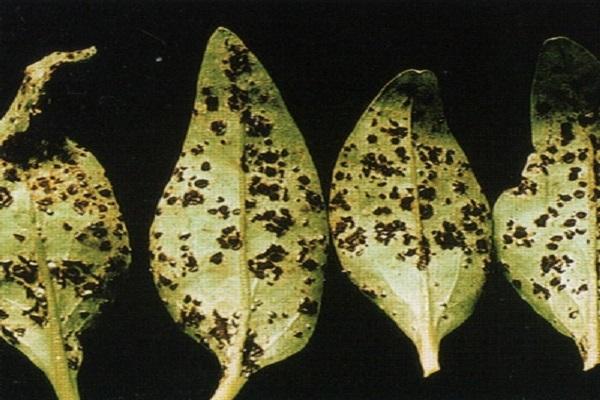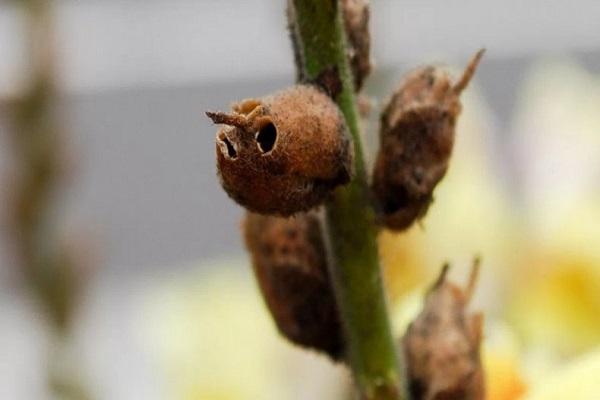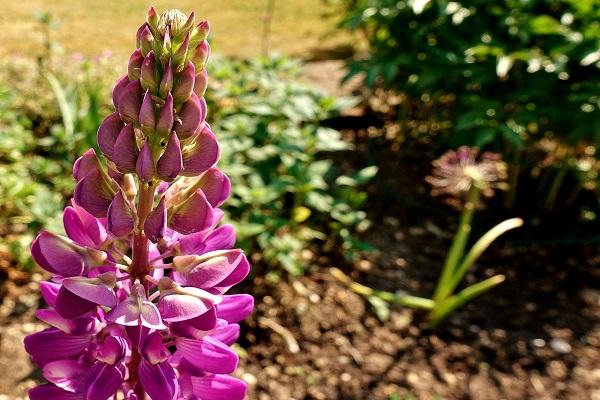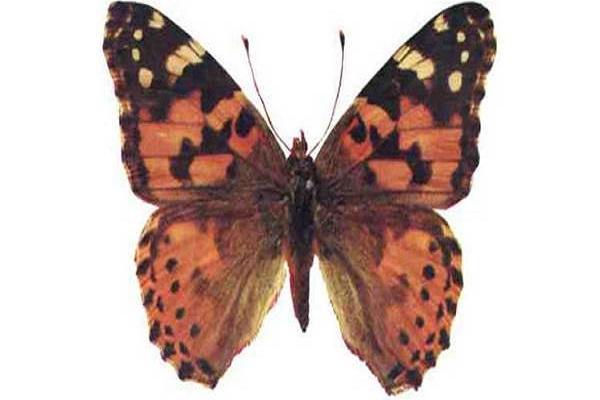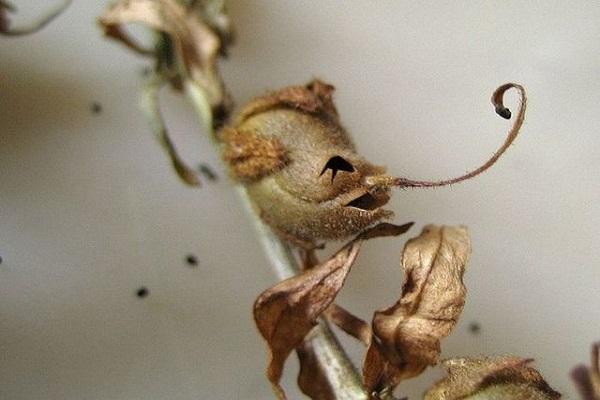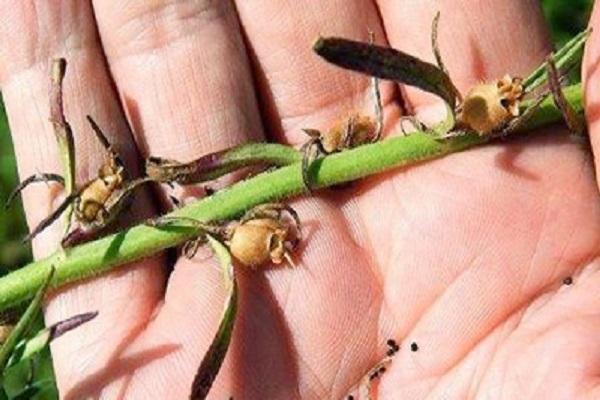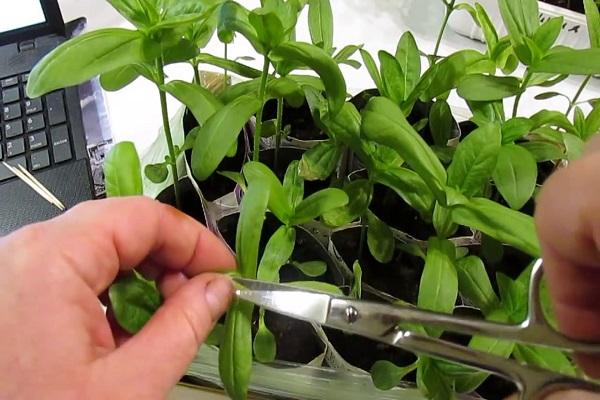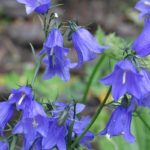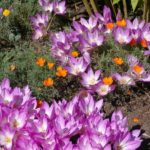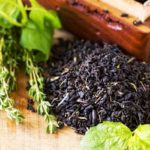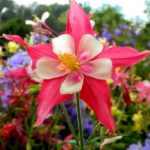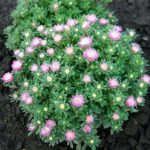Each type and variety of perennial snapdragon has its own distinctive characteristics. The flower is herbaceous or subshrub. In addition to beautiful flowering, the plant has medicinal properties. It is better to grow through seedlings. In order for the plant to develop successfully, it is necessary to provide it with proper care, which includes proper watering and fertilizing, pruning, and treatment against diseases.
- Description and features
- Kinds
- Gigantic
- High
- Medium height
- short
- Dwarf
- Ampelny
- Popular varieties
- Rocket
- Lemon
- Orchid
- Golden
- Bronze
- Madam Butterfly
- Tip Top Irma
- Alaska
- Volcano
- Brilliantrosa
- Velvet Giant
- Cherry Improved
- The Rose
- Black Prince
- Coronette
- Wildrose
- Golden Monarch
- Defiance
- Libesglut
- Red Chief
- Crimson Velvet
- Scheelocke
- Crown
- Tom-Tumb
- Floral
- Hobbit
- Snappy
- Twinnie
- How to grow through seedlings
- Preparation of seed and container
- Soil preparation
- How to sow
- Temperature, light, humidity
- Watering
- Picking
- Growing
- Hardening
- Topping
- Planting in open ground
- Sowing dates
- Selecting a location
- Soil requirements
- How to plant
- Care
- Watering
- Loosening and weeding
- Garter to support
- Trimming
- Top dressing
- Conservation in winter
- Diseases and pests
- Rust
- Blackleg
- Root rot
- Gray rot
- Septoria
- Fly larvae
- Shields
- Oviparous butterflies
- Downy mildew
- After flowering
- Collection and storage of seeds
- Reproduction
- Seeds
- Cuttings
- Medicinal properties and use in folk medicine
- Use in landscape design
Description and features
Snapdragon also has another name - antirrinum, which is translated from Greek as nose-like. The flower, depending on the variety, belongs to subshrubs or herbaceous plants. It is distinguished by a long, thin, grooved, branched green stem. The height of the stem reaches 1 meter.
The leaves of the flower are large, oblong. Their color can be light or dark green. Red veins are observed on the leaf blade. At the bottom of the stem, the leaves are located opposite each other, closer to the top they grow in an alternate position.
Flowering begins in June and continues until frost. Inflorescences are formed in the form of a spike. Large flowers exude a pleasant, fragrant aroma. Flowers can be simple or double, the color depends on the variety. The plant needs cross-pollination. Bumblebees and bees help with this.
At the end of flowering, fruits in the form of a box with seeds remain in place of the buds.If you prepare the plant for winter cold, then snapdragon is grown as a perennial.
Kinds
All types of antirrinums differ in their growth characteristics, stem structure and height.
Gigantic
These plant species are distinguished by their high growth. The stem stretches up to 132 cm in height. The bushes are distinguished by only second-order shoots, which are much smaller than the central stem.
High
Varieties of tall bushes reach 87 cm. The central stem is much higher than the side branches. In most cases, they are grown for cutting.
Medium height
Universal varieties do not exceed 58 cm in height. They are grown both for decorating flower beds and for cutting. This group of plants is distinguished by excessive branching. The central stem is almost the same height as the side branches.
short
Low-growing varieties of snapdragon are distinguished by second- and third-order shoots. They can grow up to 38 cm in height.
Dwarf
Dwarf bushes do not exceed 22 cm in height. They decorate the garden plot, but can also be grown in pots. All varieties branch well and do not take up much space.
Ampelny
Ampelous flower varieties differ in growth height (can be from 25 to 98 cm), as well as in the size and color of the bud. Varieties have been bred specifically for growing in pots.
Popular varieties
There is a wide variety of snapdragon varieties. When choosing, take into account the type of growth and branching characteristics.
Rocket
A tall, vigorous variety combines well with other plants and tolerates heat. The stem reaches a height of 92 cm, the width of the flower grows to 42 cm.
Lemon
The height of the bush does not exceed 31 cm. Large flowers are distinguished by the presence of three lemon-yellow petals.
Orchid
The stem of the flower stretches up to 23 cm, the width of the bush is no more than 17 cm.Flowering begins early. Lavender flowers.
Golden
Grown for cutting. The inflorescences are tall (up to 1 meter in height), in the form of a spike. The flowers are bright yellow.
Bronze
The height of the central stem reaches 88 cm. The inflorescences are large, two-colored, yellow-pink.
Madam Butterfly
Terry, large flowers are collected in brushes and differ in all sorts of shades. A bush is formed up to 68 cm high and 37 cm wide.
Tip Top Irma
The shoots reach a height of 82 cm. A distinctive feature is the color of the flower - pink petals are framed by a yellow border. The flowers are suitable for cutting and for decorating the area.
Alaska
The plant forms a bush no more than 62 cm high. Branching is weak. The flowers are snow-white.
Volcano
A narrow bush up to 72 cm high is formed. The yellow-beige inflorescences are distinguished by a rich honey aroma. The variety resists frost well.
Brilliantrosa
The bush forms inflorescences in the form of a pyramid. The stem stretches up to 77 cm. Large flowers are bright pink.
Velvet Giant
The flower bush reaches a height of 82 cm, with a diameter of 33 cm. Large flowers have an interesting red-purple color.
Cherry Improved
The variety is distinguished by lush, dense flowering. Belongs to tall species. The flowers are cherry pink.
The Rose
A tall variety of snapdragon forms bushes similar to roses. Large flowers are painted pink.
Black Prince
A low-growing form of antirrhinum. The flowers are large, dark burgundy in color, collected in racemes. Dark greens, black shoots.
Coronette
An early flowering, medium-sized species of snapdragon. The shrub does not grow higher than 58 cm. The color of the flowers can be white, pink, dark red.
Wildrose
The height of the strong stem is up to 42 cm. The bush is compact. The flowers are beautiful, light pink.
Golden Monarch
A medium-sized variety of snapdragon with bright lemon-yellow flowers. The height of the bush is 48 cm. During flowering, a lush brush of inflorescences is formed.
Defiance
The tall variety is grown for cutting. The flowers are bright, large, velvety, bright red.
Libesglut
The strong stem stretches up to 58 cm. The bush has a semi-spreading crown. The flowers are medium-sized, red-cherry in color.
Red Chief
The variety has medium flowering periods and a low-growing type of growth. The bushes are compact, up to 53 cm high. The flowers are velvety, dark red in color with a yellow core.
Crimson Velvet
Shoot height is up to 46 cm. The flowers are velvety, large, deep red in color, collected in voluminous inflorescences.
Scheelocke
The variety belongs to the dwarf group. The bush is spherical in shape, does not exceed 22 cm in height. The flowers are snow-white with lacy edges.
Crown
The plant forms a bush no higher than 32 cm. It has a long flowering period.
Tom-Tumb
The plant is low-growing, spherical in shape. The flowers are small in size and come in a variety of colors.
Floral
Flowers of this variety belong to the dwarf group. The bush is compact. Flowers can be of various shades.
Hobbit
The snapdragon variety belongs to the dwarf group. The stem grows only up to 16 cm. Flowers can be of various colors.
Snappy
A low-growing group of plants with early flowering, which lasts for a long time. The color palette is varied.
Twinnie
The low-growing flower is distinguished by double or semi-double purple inflorescences.
How to grow through seedlings
Plant seeds can be planted directly in open ground. The first shoots will appear after 2.5 weeks. But this planting method is suitable for regions with warm climates.Therefore, it is preferable to grow a flower through seedlings.
Preparation of seed and container
Planting of seeds begins in March. Prepare seed and containers:
- Small snapdragon seeds do not need to be treated with special preparations. You just need to select seeds suitable for sowing using a saline solution.
- If there are doubts about the quality of the material, then it is immersed for 17 minutes in a weak solution of potassium permanganate.
- The diameter of the containers must be at least 10 cm; drainage holes must be made at the bottom.
Soil preparation
Coarse sand is placed at the bottom of the container, followed by a layer of compost with sand. After this, the soil is moistened with warm water from a spray bottle.
How to sow
Before planting snapdragon seeds, they should be mixed with sand. After this, the resulting mixture is evenly distributed over the entire surface of the wet soil. The planting is again moistened and covered with film.
Temperature, light, humidity
The container with the crops should be kept indoors at a temperature of +24 degrees. Every day the film is removed for some time for ventilation. At this time, you should move the container to a well-lit place. Air humidity should not be more than 70%. Under favorable conditions, the first shoots will hatch after 8 days.
Watering
The soil should be kept moist at all times, so you should check it daily. At the same time, there is no need to allow liquid to stagnate in the soil, otherwise the risk of developing fungal diseases increases. Watering should be done in the morning. Use only warm, settled water.
Picking
After two true leaves appear, they are picked into larger containers.
Growing
Seedlings transplanted into separate containers should be grown on the lightest windowsill. Plantings should be protected from direct sunlight and drafts.
Hardening
As soon as the sprouts take root, a hardening procedure is carried out. For this purpose, open a window daily for ventilation. During the first days, the hardening time should not exceed 2-3 minutes. Gradually the time is increased.
As soon as the weather outside becomes positive, the seedlings are taken outside. It is important to protect seedlings from drafts and direct sunlight.
Topping
After five leaves appear on the plant, pinching is carried out. Thanks to the procedure, the bushes branch better. If the side branches stretch out strongly, it is better to pinch them too.
Planting in open ground
Transplantation of seedlings begins only when warm weather sets in and the threat of a return of frost becomes minimal.
Sowing dates
Prepared seedlings begin to be planted in open space in late May. A drop in air temperature at night is not scary for snapdragons.
Selecting a location
Choose a flower bed that is well lit by the sun. In this case, the site must be protected from through winds.
Soil requirements
The flower feels good in nutritious, loose soil with good aeration and neutral acidity. High acidity causes the development of many diseases.
How to plant
Holes are made in the selected area. A nutrient mixture of peat, sand and compost is placed on the bottom. The distance between the recesses depends on the variety:
- Dwarf varieties should be planted at 16 cm intervals.
- An interval of 22 cm is left between low-growing plants.
- For medium-sized children, more space is required, so the distance between the holes is made at least 32 cm.
- Tall bushes are planted at a distance of 48 cm from each other.
Before planting, the holes are thoroughly watered.
Care
Snapdragon is an unpretentious plant. Maintenance is minimal and does not require much effort and time.
Watering
Plants need to be watered only during dry periods when there has been no rain for a long time. Watering is carried out in the morning with settled warm water.
Loosening and weeding
After watering, remove weeds and loosen the soil. The less weeds there are around the bushes, the lower the risk of pests and diseases. Thanks to loosening, air, heat and nutritional components better penetrate to the underground part of the plant.
Garter to support
Tall varieties of antirrinum need to be tied to a support. The procedure will help protect the tall stem from damage in bad weather and strong winds.
Trimming
Wilted buds must be cut off on time. Thanks to this, flowering will be abundant and lush. If faded flowers are not cut off, a seed box will form in their place, and the plant will spend all its energy on developing fruits.
Withered flowers are cut off under the lower flower. After some time, a new arrow with buds will appear in this place.
Top dressing
Care also involves the addition of nutritional components. In this case, the flowering will be lush and abundant:
- the first fertilizing with organic compounds and nitrophoska is carried out after the bush has rooted (12 days after planting);
- During the appearance of buds, a liquid solution of superphosphate, urea and potassium sulfate will be useful.
Conservation in winter
With the onset of cold weather, the bushes are pruned, leaving stems 7 cm high above the ground. They are covered on top with straw, dry leaves or sawdust with peat.
Diseases and pests
To protect the plant from diseases and pest attacks, timely preventive treatment should be carried out. If a problem occurs, chemicals are used.
The following measures will help prevent the problem:
- seeds should be disinfected and soaked in growth stimulants;
- when planting bushes, the recommended distance should be observed;
- do not allow weeds to grow around the flower bed;
- in rainy summers, preventive treatment with antifungal drugs is necessary.
Rust
The disease can be recognized by the brown growths that appear on the back of the leaf blade. Affected leaves begin to dry out, turn yellow and fall off.
Treatment with Bordeaux mixture, copper oxychloride, Topaz or Zineba solution will help save the plant.
Blackleg
The defeat occurs mainly in young, immature seedlings. The cause in most cases is excessive soil moisture. The root part of the stem becomes thinner, darkens and dries out.
Diseased bushes should be removed from the site, and the soil should be treated with a solution of potassium permanganate.
Root rot
The leaves take on a pale, matte color. Gradually the leaves turn yellow and wither. The spread of the disease is facilitated by moist soil and low acidity.
Treatment is carried out using drugs such as Fitosporin, Alirin.
Gray rot
The disease develops in damp weather. The affected plant becomes covered with gray mold or brown spots, which quickly increase in size.
First of all, it is necessary to remove diseased plants from the area; the remaining flowers are treated with Bordeaux mixture, “Kuproksat”.
Septoria
The fungal disease develops during rainy weather or overwatering in cold, acidic soils.Whitish or yellow-brown spots appear on the leaves, which gradually connect with each other. Over time, the leaves fall off and the plant loses its vigor.
Treatment with preparations such as Bordeaux mixture, Profit, Hom, Oksikhom, and copper sulfate helps.
Fly larvae
Fly larvae are small, colorless worms up to 4.5 mm long. They live in the upper layers of the soil. The root branches are eaten, causing the flower to wither.
Insecticides such as “Grom”, “Aktellik”, “Karbofos”, “Aktara” will help in the fight against larvae in the soil.
Shields
The harmful insect scale insect can infect plants. The body of the insect is round in color, brown in color. The pest feeds on plant sap. The leaves begin to turn yellow, become deformed, and sticky marks appear on them. The buds do not open and fall off.
The following insecticides are used to combat scale insects: “Inta-Vir”, “Bankol”, “Aktara”.
Oviparous butterflies
Butterfly caterpillars are very voracious, so you should get rid of adults in a timely manner. All types of cutworms are common pests. Butterflies lay eggs on weeds, from which caterpillars emerge and crawl onto flowers.
The following remedies are effective against cutworms: “Decis”, “Arrivo”, “Bitoxibacillin”. An infusion based on wormwood and wood ash helps.
Downy mildew
The disease can be recognized by a whitish coating on the upper half of the leaf blade. White or brown spores appear on the inner half of the leaf.
For treatment, the drugs Ridomil, copper oxychloride or Previkur are used.
After flowering
Snapdragon flowers continue to bloom until the first frost in the fall.After this, perennial plant bushes are trimmed and mulched.
Collection and storage of seeds
The seeds ripen in fruits, which are a multi-seeded capsule. Seed collection begins immediately after they are completely ripe. Fully mature specimens are black.
The collection of material is carried out as follows:
- remove the upper part of the arrow, on which the seeds have not yet ripened;
- put a plastic bag on the remaining section of the peduncle and tie it just below the box;
- then the peduncle is completely cut off;
- After the seeds are completely ripe and fall out of the boxes into the bag, they are moved to a storage container.
The collected seeds should be stored in rolled paper or cardboard boxes. In this case, sufficient air will penetrate inside. The place should be cool and dry. If the right conditions are created, planting material can be stored for three years.
Reproduction
Snapdragon propagation occurs by cuttings and seeds. In addition, the flower reproduces well by self-sowing.
Seeds
The seeds are first sown in separate containers. The seedling method allows you to wait for flowering much earlier.
Cuttings
It is more difficult to propagate snapdragons by cuttings, so this method is rarely used. In the fall, the strongest cuttings are selected and cut into separate sections 12 cm long. The cuttings are treated with growth stimulants, buried in wet sand and covered with glass. Periodically, the glass is removed for ventilation.
After the foliage appears, the cuttings are transplanted into separate pots. In the spring, when warm weather sets in, the cuttings are transplanted to an open area.
Medicinal properties and use in folk medicine
The beneficial substances that make up the plant determine its beneficial healing properties for various diseases. Decoctions and infusions help cope with diseases of the gastrointestinal tract, visual organs, and genitourinary system.
Use in landscape design
Snapdragon will become a real decoration of the garden plot:
- Flowers are planted along paths and borders.
- Flowers look good in combination with other types of plants (for example, poppy, sage, phlox).
- They look beautiful in hanging flowerpots that will decorate a veranda, loggia or balcony.
- Dwarf varieties of flowers look good on alpine slides.
The beautiful and bright flowering of snapdragon will definitely attract the attention of others. The variety of species allows you to choose a suitable variety for single cultivation and in combination with other plants.

